|
In true Universal Design for Learning fashion, rather than concluding with the major takeaways that I got from Dr. Katie Novak's and Thea Durling's UDL Design Lab course, I've decided to put them all first!
TAB (Teaching for Artistic Behavior) and UDL are both approaches with an emphasis on choice and taking accountability of one's own learning. To me, TAB and UDL go hand-in-hand. The student is an artist and independent learner, and their classroom is their studio and the place where learning and growth takes place. What do artists do? They provide multiple means of "Engagement, Representation, and Action & Expression." They can describe the "what, how, and why" of their learning, process, and artwork. Expert artists are "Purposeful & Motivated, Resourceful & Knowledgeable, and Strategic & Goal-Directed."
Major Takeaways: Additions & Changes to Curriculum
|
|
The very first time I remember hearing the term "UDL," it was through an email back in 2014 that our then-superintendent Dr. Kristan Rodriguez sent. She announced the appointment of our new assistant superintendent, Dr. Katie Novak, who had just published her book UDL Now!: A Teacher's Guide to Applying Universal Design for Learning in Today's Classrooms.
|
It was this same year that the National Core Arts Standards had been released, putting a strong holistic emphasis on the entire process and reflection involved in artmaking: Creating, Presenting/Performing/Producing, Responding, and Connecting. This was followed by the process of revising the Massachusetts Arts Curriculum Frameworks (to be released in just a couple of months) to match these national standards.
|
So of course, it was also that same year that I began reflecting on my own teaching practices and asking myself some really hard questions. I had started off as a new teacher a couple of years before, and since then I had been spending countless hours into the night planning and developing the most perfect well-rounded lesson plans and curriculum designs.
|
As a part of our department's professional development that year, I decided to visit an award-winning art department at another school to see what made them so successful. The teachers there continue to inspire me to this day, and I'm always so impressed when they post new artwork or arts events on their department's pages. When I visited, from my perspective, their curriculum was flawless, all the way from the introductory courses to advanced and AP. It was perfectly designed, offered some choice from a selection of specific projects, and provided opportunities for students to master their technical skills with the Elements and Principles of Art and Design, most notably in texture, value, color, and proportion. It's no surprise that their students' work is consistently recognized in art shows and competitions, most notably in the annual Boston Globe Scholastic Art and Writing Awards.
But I was also curious to see how I could push this even further into the realm of choice and the learner-directed classroom. I wondered if that meant that my students wouldn't win as many awards because the focus would be taken off technical skill and product of work in favor of process and experimentation. Over the next couple of years, I incorporated more choice into my projects in an attempt to find a balance between process and product. That is, until I learned about TAB. Teaching for Artistic Behavior is an approach to teaching where the student is the artist and the classroom is their studio, and the overall essential question is, "What do Artists Do?"
To me, TAB is UDL to the extreme. What do artists do? They provide multiple means of Engagement, Representation, and Action & Expression. They can describe the "what," "how," and "why" of their learning, process, and artwork. Expert artists are Purposeful & Motivated, Resourceful & Knowledgeable, and Strategic & Goal-Directed. To me, TAB meant making the daunting decision to give up all of the curriculum I had created in order to pave the way for full artistic choice, experimentation, and expression.
I finally ended up making the decision to toss my meticulously designed, traditional curriculum for one that offers full choice and puts students in charge of their own learning. I completed the TAB Summer Institute in 2017, completely redid everything for TAB and UDL, and presented my experiences at the 2017 Massachusetts Art Education Association Conference.
Since then, everything so far has been overwhelmingly positive. Students are free to express their interests and what's important to them, so I'm learning so much more about them. Rather than agonize over perfection, they are free to experiment and take risks, so I've seen so much more growth and confidence than I ever saw in the traditional art room. Grading is based on engagement and process rather than product or technical skill, so they have the freedom to explore without the consequence of a bad grade. For example, on any given day, they can be experimenting with a new material, working hard at developing a particular skill, or planning and designing a long-term conceptual piece. In this sense, inequity has been eliminated, and all students have the opportunity to be successful regardless of their experience with art or any differences they may have. And they are so much more invested in their work, because they are the ones designing their projects, not me. I actually have more trouble now collecting artwork for art shows because the students all want to take their art home to give to their families and friends!
UDL Lesson Critique & Comparison
To compare my UDL practice with others, I chose to critique a lesson called “Why We Need Art” by Maddy Toole because it was similar to my own “What is Art?” was curious about how other teachers tackle this broad but important topic in a short amount of time. Here are some major takeaways that I noticed from Toole’s lesson, and I used the right column to compare with what I do in my own lesson.
The interactivity at the beginning of Toole’s lesson is really helpful in getting students interested and engaged in the discussion. From what it sounds like, the teacher has both images of objects and actual objects themselves, but either way, there are lot of examples shown to the students. I also think that it’s a good idea to include where art is located as well as who can create it. I introduce these concepts at different times throughout the course, but even though my primary focus is “what is art,” or “what does art mean to you?”, I could go more in depth about these things during this lesson too. Having physical objects would also add another level of dimension to the different sources of information being presented.
After reading about the several examples introduced here, I’m wondering if I should do something similar or something more interactive, like having different pictures or objects around the room for students to reference during the lesson like Toole does. I focus primarily on Duchamp’s Fountain and base the discussion around this piece, although several other examples are introduced in the video “What is Art?” and we also talk about how everything in the room (furniture, architecture, art supplies) are all part of this discussion. I’m not sure if I should add more examples to increase engagement or understanding, or if this would be too complicated.
Looking at Toole’s lesson again, I think that if a class discussion is opened up to the whole class right away a lot of kids won’t participate. Some sort of individual or small-group activity included here might be ideal to increase overall participation and engagement. That’s the goal with my introduction - by having each student write down their own answer then discuss as a group, I’m trying to get every student involved in some way, even if they aren’t talking to the whole class.
Also, in the explanation of the interactive discussion, there is no mention of discussing where art could be located or who could make it, so I’m curious where this conversation comes up. I’m wondering if she has various artifacts or objects from different places, made by different types of people. This would be a great opportunity to incorporate so many different things from around the world, if they are available (I have a borrowed Oaxacan woodcarving from Mexico that would work well here)
Having a vision board or poster seems like a good way to present students’ understanding of the meaning of art by allowing them to use examples of their favorite types of art, and it does incorporate writing, but this one type of assessment seems very rigid and not quite connected to the lesson’s idea. It’s kind of like the Rubik’s cube that Todd Rose talks about - it needs more variability and accessibility. First, I think having multiple forms of presentation would be ideal. Perhaps aside from creating a poster, students could also create a video, write a reflection, create a presentation, or create their own artwork. And second, using students’ favorite types of art is personal and engaging but doesn’t quite reflect the theme of “what they believe art is, where it is located, and who can create it.” Instead, I would want students to incorporate different images of what they believe art looks like, or perhaps what they think it should look like, and maybe even what they think it shouldn’t look like. It would be interesting to see how all of these projects vary.
I noticed that this culmination piece is one thing I am missing in my own lesson. I have always presented this as a mini-lesson, where it would take no more than half the class, and the other half would be dedicated to open studio. I thought of the lesson as more “food for thought” that students could then reflect on, but ultimately I want them to understand that art is not always the typical “beautiful painting in a museum,” and that this type of art is only a fraction of the whole art world. I’m wondering if I should incorporate a project after this lesson, rather than go right to open studio? I’m not sure yet… I will be doing this lesson again next week, so I have until then to figure it out!
One final thought I have for Toole's lesson is that her title is "Why We Need Art" and she mentions that one of the goals includes the importance of art and how it impacts our community, but there is no mention of any of these topics in the discussion; it instead focuses on what art is, where it is located, and who does it. These are important discussion topics, but the importance and impact of art would need to be addressed by adding it to the discussion, including more examples, or perhaps creating a different lesson altogether.
Overall, I think that both Toole's and my lessons are around the category of Emerging. There are many opportunities for students to learn and share their understanding in multiple ways, and I think that both lessons are accessible to all learners in some way, but there are still opportunities to enhance students' learning and understanding of this broad topic.
I noticed that this culmination piece is one thing I am missing in my own lesson. I have always presented this as a mini-lesson, where it would take no more than half the class, and the other half would be dedicated to open studio. I thought of the lesson as more “food for thought” that students could then reflect on, but ultimately I want them to understand that art is not always the typical “beautiful painting in a museum,” and that this type of art is only a fraction of the whole art world. I’m wondering if I should incorporate a project after this lesson, rather than go right to open studio? I’m not sure yet… I will be doing this lesson again next week, so I have until then to figure it out!
One final thought I have for Toole's lesson is that her title is "Why We Need Art" and she mentions that one of the goals includes the importance of art and how it impacts our community, but there is no mention of any of these topics in the discussion; it instead focuses on what art is, where it is located, and who does it. These are important discussion topics, but the importance and impact of art would need to be addressed by adding it to the discussion, including more examples, or perhaps creating a different lesson altogether.
Overall, I think that both Toole's and my lessons are around the category of Emerging. There are many opportunities for students to learn and share their understanding in multiple ways, and I think that both lessons are accessible to all learners in some way, but there are still opportunities to enhance students' learning and understanding of this broad topic.
I viewed the "How to make stress your friend" when the module was first introduced, and it has changed my whole perspective on dealing with stress. Personally, a little bit of stress does help me get things done, but sometimes, it becomes too much and I feel overwhelmed and anxious, and this often causes me to procrastinate and avoid particularly stressful tasks. But since watching the video, there have been a times when I redirected my thought process to see the stress not as something that is overwhelming and inhibiting, but as a biological response preparing me for the situation. If this has helped me in such a big way, it would definitely make a difference for our students, who generally have a high level of stress. I think this would be a great video to show to my students. The message is so universal, but I also hope that it would help my students overcome the stress that accompanies the fear of failure and making mistakes with their artwork.
Self regulation is so important in my classroom, and one of the biggest challenges I encounter is the fear of failure. I strongly emphasize process over product, and I remind students that failing and making mistakes are very much encouraged and don't affect their grade negatively - in fact, trying again and overcoming challenges/obstacles positively affect their grade - and yet many of them are still so afraid that they either give up after the first try or don't even try at all. I'm still working on ways to eliminate that fear of making mistakes. I really liked the example of modeling failure by high school teacher Kristi Johnson Smith, who's really bad at playing the guitar but still plays "Happy Birthday" for her students and even threatens to bring it back when her students are struggling with that fear ("How to Create a 'No Fear Learning' Environment in Your Classroom"). Whenever something doesn't work as planned while I'm teaching, I usually make a joke about it and try to find another solution, but I could definitely try to model this behavior more. I did a printmaking demonstration a few weeks ago, and something was off - the ink was a little too dry, or the plate had too much texture or moisture - but whatever it was, the demo was not working at all. We all had a good laugh about it, and I talked the class through different solutions that I was trying. When nothing else was working, I said that sometimes things don't go the way you planned, and that I'd keep trying and let them know once I figured out what went wrong. Truthfully, I was a little frustrated and embarrassed that my demo hadn't gone well, but after seeing the example with the teacher and her guitar, I now hope that this experience gave my students more courage to fail and make mistakes, as well as the courage to not give up and try different things.
Self regulation is so important in my classroom, and one of the biggest challenges I encounter is the fear of failure. I strongly emphasize process over product, and I remind students that failing and making mistakes are very much encouraged and don't affect their grade negatively - in fact, trying again and overcoming challenges/obstacles positively affect their grade - and yet many of them are still so afraid that they either give up after the first try or don't even try at all. I'm still working on ways to eliminate that fear of making mistakes. I really liked the example of modeling failure by high school teacher Kristi Johnson Smith, who's really bad at playing the guitar but still plays "Happy Birthday" for her students and even threatens to bring it back when her students are struggling with that fear ("How to Create a 'No Fear Learning' Environment in Your Classroom"). Whenever something doesn't work as planned while I'm teaching, I usually make a joke about it and try to find another solution, but I could definitely try to model this behavior more. I did a printmaking demonstration a few weeks ago, and something was off - the ink was a little too dry, or the plate had too much texture or moisture - but whatever it was, the demo was not working at all. We all had a good laugh about it, and I talked the class through different solutions that I was trying. When nothing else was working, I said that sometimes things don't go the way you planned, and that I'd keep trying and let them know once I figured out what went wrong. Truthfully, I was a little frustrated and embarrassed that my demo hadn't gone well, but after seeing the example with the teacher and her guitar, I now hope that this experience gave my students more courage to fail and make mistakes, as well as the courage to not give up and try different things.
The concept of grit exactly describes the main challenge I face in the art room. Even though students have the freedom to choose their own materials and ideas and are able to do anything they want to, I've noticed that a lot of them stay in their comfort zone, especially with their conceptual work. I tend to see a lot of things like sunsets, flowers, zentangles, and (copyrighted) cartoon characters which are excellent choices for beginning artists to build their confidence, but they're not growing, learning, or creating personal/original art if that's all they do without experimenting or building more complex ideas. I have a few students who have been practicing drawing cartoons for a few weeks now by copying their favorite cartoon characters, but when I suggested that they now create their own characters based on what they've learned, they were hesitant and weren't sure if they could do that, even though they are always encouraged to challenge themselves and try new things. So how else would I be able to encourage them to push beyond their comfort zone?
I used to hear "I can't do this" and "I'm so bad at art" almost every day, until I started off each course introduction by asking everyone to instead say "I will try to do this" and "I will get better with practice." I'm still trying to find ways to promote the growth mindset (as mentioned in the Carnegie Mellon article). It's challenging because students come into the class already having a fixed mindset. Before they even walk in on the first day, they think that they're bad at art and can't get any better because they're "not an artist" and they're "not talented". But I think this has a lot to do with how many adults perceive art. Whenever a parent, colleague, or acquaintance talks to me about art, I almost always hear "I don't have a creative bone in my body" or "my (family member) got all the artistic talent" or (my favorite) "I can't even draw a stick figure!" But it's simply not true. While it is true that art comes more easily to some people (as with any skill), with practice, anyone can be really good at art. It just takes grit to get there!
I was really happy to see that the article on 5 ways to grow grit mentions pursuing your interests and practicing as #'s 1 and 2, because I really push students to create art about their personal interests and continue to practice and challenge themselves. If you're personally interested in what you're expressing, then you're more invested in the artwork you're creating, and you try harder and grow faster. And when a student says that they're bad at something, I always try to remind them that no one was ever really good at anything without practice. A lot of them play sports, so it helps to remind them that they were not always good at the sport they play, and that they had to put in several hours, weeks, even years to get to where they are now. I also agree with the blog, that if I know the student better, they are generally more likely to accept a suggestion to push their artwork further.
I'd really like to show the grit TED talk to my students too, especially to my AP students. For AP Studio Art, students are required to submit 12 pieces in a concentration, which is a sustained investigation of one topic of the student's choosing over a semester (in addition to 12 other pieces). It's really common for students to change their concentrations at least once or twice during the semester, but I'm anticipating much more of a challenge next year because they will have to submit 15 pieces. Spending a whole semester on one topic will require a lot of grit, so providing students with support during this course will be something I'll need to focus on.
WOOP seems like this activity would help students identify what obstacles are holding them back and then develop a plan to overcome these obstacles. I think the best way to use this app would be as an optional resource for students who are struggling to accomplish their goals.
I used to hear "I can't do this" and "I'm so bad at art" almost every day, until I started off each course introduction by asking everyone to instead say "I will try to do this" and "I will get better with practice." I'm still trying to find ways to promote the growth mindset (as mentioned in the Carnegie Mellon article). It's challenging because students come into the class already having a fixed mindset. Before they even walk in on the first day, they think that they're bad at art and can't get any better because they're "not an artist" and they're "not talented". But I think this has a lot to do with how many adults perceive art. Whenever a parent, colleague, or acquaintance talks to me about art, I almost always hear "I don't have a creative bone in my body" or "my (family member) got all the artistic talent" or (my favorite) "I can't even draw a stick figure!" But it's simply not true. While it is true that art comes more easily to some people (as with any skill), with practice, anyone can be really good at art. It just takes grit to get there!
I was really happy to see that the article on 5 ways to grow grit mentions pursuing your interests and practicing as #'s 1 and 2, because I really push students to create art about their personal interests and continue to practice and challenge themselves. If you're personally interested in what you're expressing, then you're more invested in the artwork you're creating, and you try harder and grow faster. And when a student says that they're bad at something, I always try to remind them that no one was ever really good at anything without practice. A lot of them play sports, so it helps to remind them that they were not always good at the sport they play, and that they had to put in several hours, weeks, even years to get to where they are now. I also agree with the blog, that if I know the student better, they are generally more likely to accept a suggestion to push their artwork further.
I'd really like to show the grit TED talk to my students too, especially to my AP students. For AP Studio Art, students are required to submit 12 pieces in a concentration, which is a sustained investigation of one topic of the student's choosing over a semester (in addition to 12 other pieces). It's really common for students to change their concentrations at least once or twice during the semester, but I'm anticipating much more of a challenge next year because they will have to submit 15 pieces. Spending a whole semester on one topic will require a lot of grit, so providing students with support during this course will be something I'll need to focus on.
WOOP seems like this activity would help students identify what obstacles are holding them back and then develop a plan to overcome these obstacles. I think the best way to use this app would be as an optional resource for students who are struggling to accomplish their goals.
Having students write their definitions in the Seesaw app first really improved their engagement in the discussion, and my guess is because typing seems less permanent than writing it down, so students felt more comfortable sharing their opinions. I've found it's also been helpful for the Artist Inspiration assignment that I give - I ask students to find an artist whose work inspires them or stands out to them, and I ask them to post a response to this artist's work, including what stood out to them and how their work is inspired (or can be inspired) by this artist's techniques or ideas:
https://app.seesaw.me/pages/shared_activity?share_token=D-_P2HQPRWOKhFABSYlxHg&prompt_id=prompt.64f1e416-ae0b-418d-b6a6-17f0c3b4a114
Most students respond really well to this assignment and write a thorough response, and I learn so much more about them from this assignment. Same with when I ask students to write artist statements about their work.
I did decide to keep the Studio Habits assignment because after giving a survey (I'll discuss that in another module shortly), I noticed that several students selected "disagree" for how the course subject matter relates to other subjects, so I feel like I need to emphasize the versatility of the Studio Habits so much more. But I do plan on finding more ways to clarify this assignment, such as adding more examples, and definitely buying those posters next year.
Studio Habits assignment (the halfway one):
https://app.seesaw.me/pages/shared_activity?share_token=2jSxLjpKTquTg_s98fk-Tg&prompt_id=prompt.1ddeb37f-81f3-4819-979e-7c125ff8ebee
And here is the reflection page that I direct my students to:
http://www.kostichart.com/reflect.html
Ever since I switched to TAB/choice last year, I immediately noticed an improvement with engagement, and it was then that I more clearly saw all of the barriers that had been present in my more traditional lessons. By opening up the studio, I have been eliminating as many barriers as possible, and I was really excited to see that I've made significant improvement on all of the bullet points in the "5 Ways" article. Students are able to choose their own subject matter and materials (which keeps them engaged), I ask them to rephrase sentences that include the word "can't," they learn the Studio Habits which are universal to success, and while I am available for support and feedback, I try to give students enough space to learn, grow, and make mistakes on their own. What's really amazing to me is that before, students with special needs were having a lot of difficulty accessing the material and finding success. Now, they thrive with full choice, and the difference between any two learners is indiscernible. And if students have an IEP or 504, they are automatically accommodated and included, as if they didn't need a plan at all.
I have two examples of lessons/activities that come to mind that may have barriers to certain learners. One is the self reflection (Links to an external site.)Links to an external site. that I assign. I specifically ask that students write about two Studio Habits that they've demonstrated successfully (for example, "Engage and Persist" because they worked through obstacles, and "Express" because they used an idea that has significant person meaning), and one that they would like to work on ("Observe" to practice observational drawing). I also ask that they be very specific and cite particular pieces (for example, I used "Express" really well because I painted my dog, who is really important to me). This assignment is very rigid with specific instructions because it makes it easier for me to assess, but some students have trouble following directions, remembering what the Studio Habits are, or understanding how specific I want them to be. Here are a few things I thought of that could help:
- Add a very specific example to the assignment
- Put big posters of the Studio Habits up on the wall (will probably order these for next year)
- Remind students that they can also submit a video or voice response
- Include additional review of the Studio Habits at the beginning and throughout the course
- Do small group discussions first before students respond on Seesaw
The other lesson I had in mind is one of my mini-bootcamps called "What is Art." Unlike the majority of class time, this lesson is very structured. I ask students to write down their own definition of art, we discuss in small groups, and then as a large group while I write everyone's ideas on the board. I show students an image of Duchamp's "Fountain" (Links to an external site.)Links to an external site.and we have a debate on whether or not this is "art." I write these ideas on the board too, emphasizing that there is no right or wrong in this discussion. After talking about the reasons why this piece is officially considered a work of art in the art world, I then ask students to post their own definition of art on Seesaw, and they may change or edit it any time.
Possible barriers I see are:
- All students must write the definition in the same way on the same app
- We look at only one artwork
- Group discussion, but not everyone is an active participant
Here are some ways I thought of so far that I think would increase engagement and eliminate barriers:
- Students can record their definition if they want to
- Instead of a written response, students can post multiple pictures of what they think art is (or what it isn't)
- Add captions to a Powerpoint as we're talking (I learned this in Danielle's PD workshop!)
- Designate class time to creating something that is "art" or emulating something that is thought of as "art"
- Students could post images of what they think "art" is onto Seesaw, Google classroom, or a collaborative Google doc
Feedback Loops: Student Surveys
I do my best to make changes based on feedback as much as possible, but I could definitely take more steps to gather more feedback. In the past month, I've asked my students a lot more questions in how to improve issues that arise in the classroom
|
For longer term feedback loops on my own teaching practice, about a week ago I decided to give the students the DESE secondary survey.
|
I didn't give much introduction, I just said that I would like to improve and to please answer honestly and anonymously. I did get a lot of positive feedback and some really nice notes on the back, but while I really like to stay positive, I'm going to focus on the things that students most consistently selected "disagree" and "strongly disagree," in addition to ideas how I can improve. To follow the practice of the loop, I'd like to give this survey again in a month or so to see if there is any difference, even though most of the students will be new.
I chose to focus on the statements where 20% or more of students chose "disagree" or "strongly disagree." I've bolded the two highest numbers, and I've bolded/italicized questions or concerns I have for particular categories.
I chose to focus on the statements where 20% or more of students chose "disagree" or "strongly disagree." I've bolded the two highest numbers, and I've bolded/italicized questions or concerns I have for particular categories.
Implicit Bias & Cogens
- Overall theme: Collecting feedback from 100% of students, especially those who are quiet or who don't think their feedback is as valuable (most common barriers)
- I try to get feedback in several ways, some more inclusive/thorough than others:
- Asking the class as a whole, quick read
- Getting a vote (whole class)
- Asking individual tables
- Asking individual students
- Written feedback
- Anonymous surveys (most honest)
- New strategies, some leaning toward the smaller yet diverse/inclusive cogen structure.
- ***Peer critiques: Students get into groups of about 4, but must sit with peers who they don't talk to or don't know as well (really successful and positive)
- All students writing peer feedback on index cards and giving those to the presenting student, and opening up verbal discussion for students who would like to speak
- I like the idea of establishing regular classroom cogens
- I would rather present a sign-up sheet first (Tobin) to see who would be interested, than invite other students who could balance this group
- Major barrier that we face as a district is the lack of racial diversity. We can create cogens based on different interests, experiences, learning styles, levels of achievement, LGBT, etc. but since 88.1% of our student population is white (DESE), it would be difficult to create cogens that are racially diverse.
- Another barrier is the male:female ratio in art classes. This is a frequent topic of discussion between Jon and me; while introductory classes are generally mixed, our advanced Studio Art classes are mostly female (19 out of 21 Portfolio/AP students identify as female), and advanced Design classes are mostly male.
- Implicit bias in the art classroom: Art teachers are often drawn to students who are more interested in art, due to common interest but also to foster creativity, interest in art, and technical abilities.
- I've heard horror stories from adults about how their art teachers told them that they weren't good enough, or how they stopped doing art because they're "not an artist" or "not creative"
- My biggest goal as a teacher has always been to make every student feel valued and that they CAN do art, even if they're starting from square one. I find that I'm even more inclined to spend a little more time with the "non-artsy" students because they often need the most encouragement
- An idea for this week as new term is starting:
- Create a cogen over the next two days to review the class syllabus, then make changes as needed for new classes coming in on Wednesday
- And/or, leaving blanks in the syllabus and working with my new classes to create individual syllabi for each class - a little nervous about this because I've designed the syllabus based on what I've found works best over the years, but I'd be willing to try it out.
Student Feedback on UDL
I told all of my students that I was working on a final project for a class, and that I was hoping to gather some feedback about how choice and the open studio format has been beneficial to them, as well as any feedback or suggestions on how to improve it. They could talk to me in person, make a post on Seesaw, email me a paragraph, or make an audio clip or video and send it to me. The feedback I received for this was overwhelming positive. While I will be speaking with students over the next couple days to seek out more constructive feedback on ways to improve, it makes me so happy to see that overall, my students are leaving the class feeling proud and confident in their work and that they felt safe and free to try new things, express their ideas, and take risks. If some students are not feeling this way as they leave the course, that's where I want to make improvements, and part of this is finding ways to ensure that students feel that their opinions and suggestions are appreciated and valuable. The most honest feedback I have received is from anonymous surveys, handwritten and typed, but I'd like to see if I could get the same kind of feedback from small cogen discussions.
"In Mrs. Kostich’s art class, all students are given freedom. We get to work on any art we want to do, and there is free access to any kinds of art materials we want to use. As a senior student who prepared for art school, this was a great environment for me to focus on the art I wanted to do. At the beginning of the term we usually have each class dedicated to learning each element of art such as playing with lights, distances, colors, and etc. This is recommended for starters but if you are already an experienced artist or a senior preparing a portfolio, you are given a choice whether to participate in this or work on your own art. Even during the free classes, we can always ask Mrs. Kostich for help or for any advice on the art we are working on. Students are encouraged to freely talk to each other and get inspired by everything, which is why we are free to work in any part of the school. I personally enjoy working in the ceramics room although I mostly paint, because the room is small and very quiet. Some of my friends like to work at the library or in the hallway. At the end of the day, we upload what we have accomplished in the Seesaw classroom. Though the Seesaw classroom we get to see what our friends are working on and get more inspiration for our art. I absolutely love Mrs. Kostich’s art class because she provides the free spirit all artists need. I think art is supposed to be something that naturally comes from you, not something you have to learn and follow the class instructions and so on. Mrs. Kostich always sees each student one by one during the class to check on what we are working on and tells us how she feels about our art or anything that we might be able to improve on. Other than that, it is all in our hands. The students become independent but also responsible for their art, and we really love what we are doing. It’s not like she sets us loose because she is always there but it’s more like she trusts us and we act accordingly to keep the trust. Also, she is more of a listening teacher which is why our class really respects one another and their art as well.
Overall, I really love Mrs. Kostich and her class ☺"
"I personally loved being able to choose what I did in art class. I loved it because on a packed day with tons of homework and projects and tests I had one block where I could release all of my thoughts and feeling by drawing or painting in art. This gave me time to relax and focus on something that wasn’t stressing me out. At the beginning of the term we did boot camps which was interesting and fun but at the same time taught me something. Doing this allowed me to use the things I learned in the beginning and incorporate it into my own piece. Having to do projects every week or every other day would ruin the art for me because it wouldn’t be an original thought or idea."
"An art class serves it's best purpose by being open studio, even if that isn't all the time. Providing students, especially ones who are passionate about their art, time in which to develop their skills while at the same time is constantly getting feedback from their friends. A student may be more willing to do another activity or a class exercise if they are easily able to connect it back to their own work immediately after. In addition, a happy work environment is essential for creativity. An art class is supposed to cultivate creativity as much as possible."
"I liked how we were allowed to choose what we do everyday. I liked how we could use whatever we want to create whatever we want. The only down part to it is the fact that sometimes I wouldn’t know what to draw or paint so I would take a day to just decide that. Maybe to do something about that you could make some kind of challenge to do every week, like draw a person with rainbow hair or make a dress for a character with only watercolor (something to just try that’s a little more challenging)."
"I think that [themes] would be fun earlier in the semester, maybe accompanied by the skills workshops!! I think that once everyone has decided on their concentrations that exploring more themes might distract from their core work, but it could still be fun."
"I love art and all throughout elementary and middle school, I felt as if my art classes had held me back. When I came to high school in the fall, I was excited to finally have the freedom to express myself as a person; but I was still afraid that I wouldn’t be able to be the best artist I could be due to the restrictions my art class might have on me. During the first few days of my class as my teacher explain the class’ structure, I began to realize that I would finally have an art class where I could do what I wanted to do. With the ability to choose what I wanted to work on in class, I completed a variety of project that I felt confident and proud of. I could work on something without feeling rushed and I knew that I could always try new things."
"I think choice is so important to me because when I make art, I like to have freedom. In this class I can choose what media to work with certain media’s I am better with working with. I also like being able to choose the topic so I am more interested in what I’m making and my art means something to me when I’m done. I have something I’m proud of in the end."
Overall, I really love Mrs. Kostich and her class ☺"
"I personally loved being able to choose what I did in art class. I loved it because on a packed day with tons of homework and projects and tests I had one block where I could release all of my thoughts and feeling by drawing or painting in art. This gave me time to relax and focus on something that wasn’t stressing me out. At the beginning of the term we did boot camps which was interesting and fun but at the same time taught me something. Doing this allowed me to use the things I learned in the beginning and incorporate it into my own piece. Having to do projects every week or every other day would ruin the art for me because it wouldn’t be an original thought or idea."
"An art class serves it's best purpose by being open studio, even if that isn't all the time. Providing students, especially ones who are passionate about their art, time in which to develop their skills while at the same time is constantly getting feedback from their friends. A student may be more willing to do another activity or a class exercise if they are easily able to connect it back to their own work immediately after. In addition, a happy work environment is essential for creativity. An art class is supposed to cultivate creativity as much as possible."
"I liked how we were allowed to choose what we do everyday. I liked how we could use whatever we want to create whatever we want. The only down part to it is the fact that sometimes I wouldn’t know what to draw or paint so I would take a day to just decide that. Maybe to do something about that you could make some kind of challenge to do every week, like draw a person with rainbow hair or make a dress for a character with only watercolor (something to just try that’s a little more challenging)."
"I think that [themes] would be fun earlier in the semester, maybe accompanied by the skills workshops!! I think that once everyone has decided on their concentrations that exploring more themes might distract from their core work, but it could still be fun."
"I love art and all throughout elementary and middle school, I felt as if my art classes had held me back. When I came to high school in the fall, I was excited to finally have the freedom to express myself as a person; but I was still afraid that I wouldn’t be able to be the best artist I could be due to the restrictions my art class might have on me. During the first few days of my class as my teacher explain the class’ structure, I began to realize that I would finally have an art class where I could do what I wanted to do. With the ability to choose what I wanted to work on in class, I completed a variety of project that I felt confident and proud of. I could work on something without feeling rushed and I knew that I could always try new things."
"I think choice is so important to me because when I make art, I like to have freedom. In this class I can choose what media to work with certain media’s I am better with working with. I also like being able to choose the topic so I am more interested in what I’m making and my art means something to me when I’m done. I have something I’m proud of in the end."
|
|
|
|
|
|
0 Comments
Leave a Reply.
About Kostich Art
Rebecca Kostich is an art teacher at Groton-Dunstable Regional High School in Groton, MA.
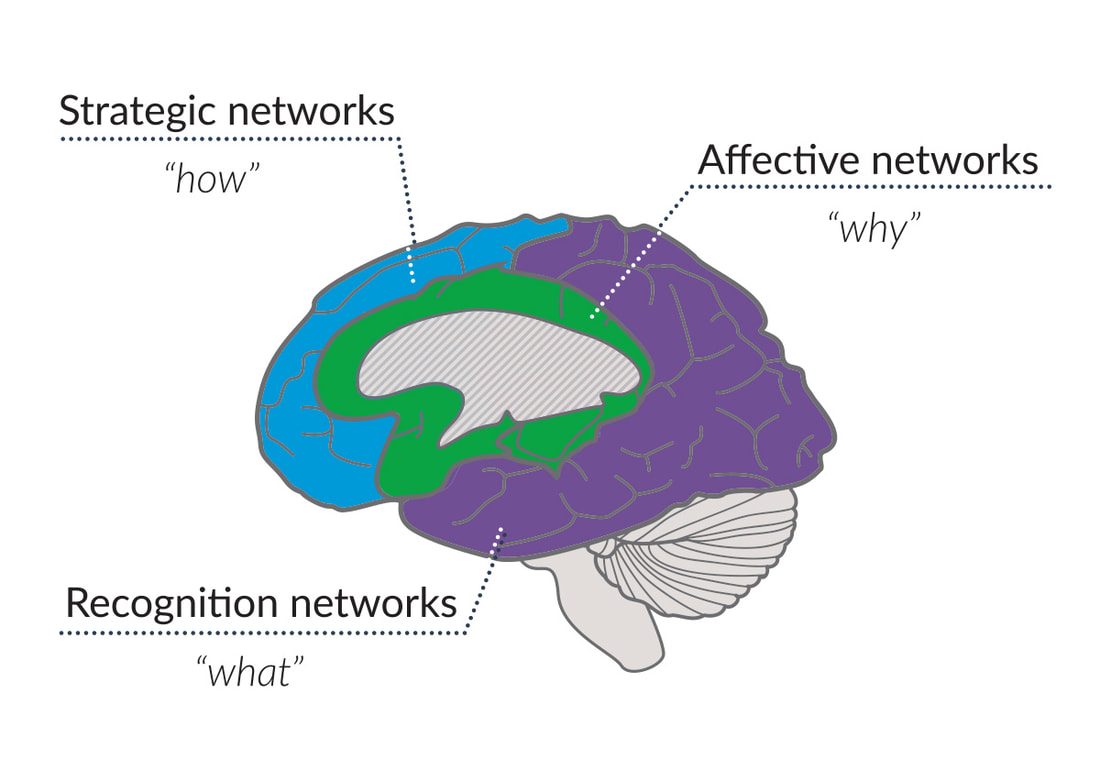
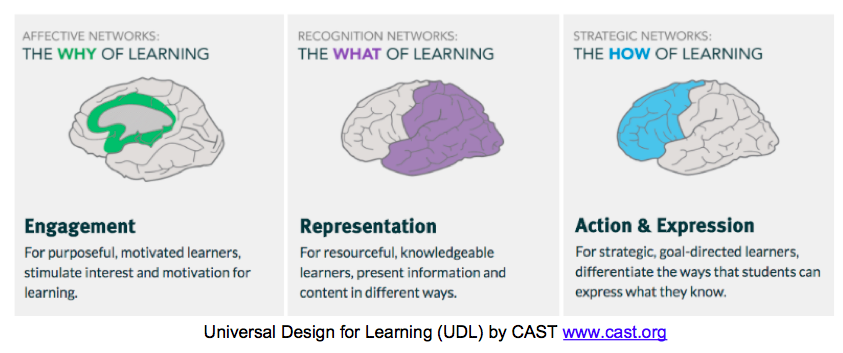
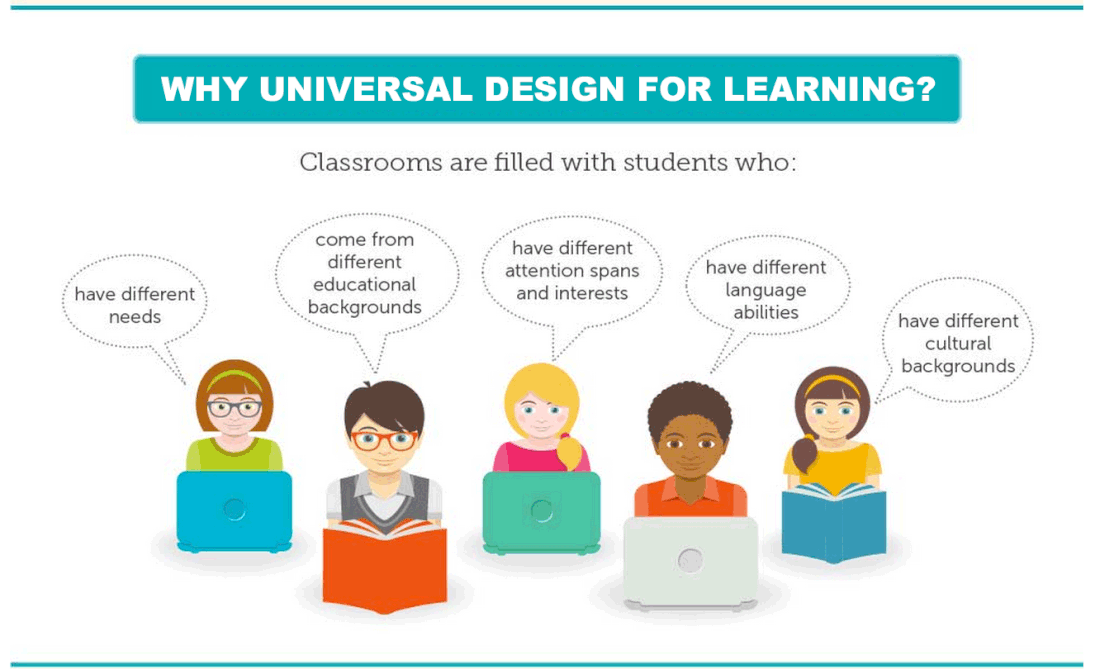
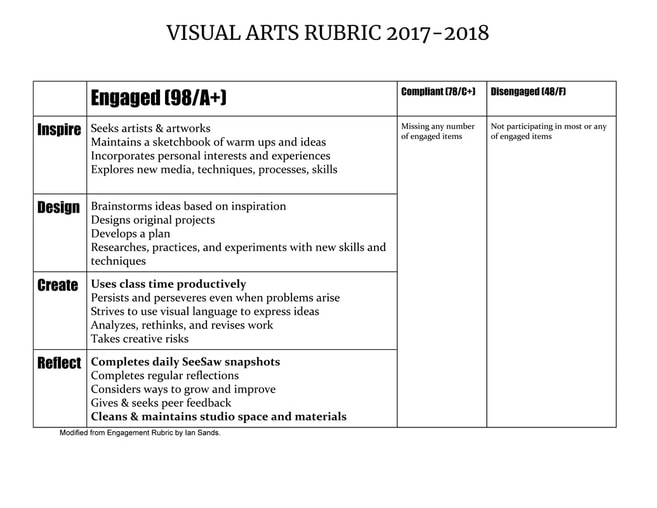
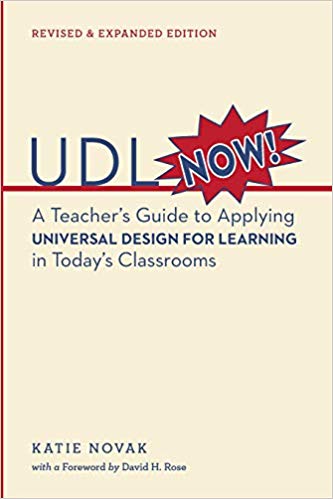
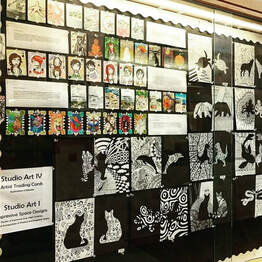

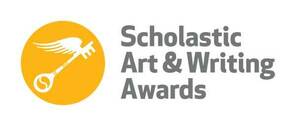

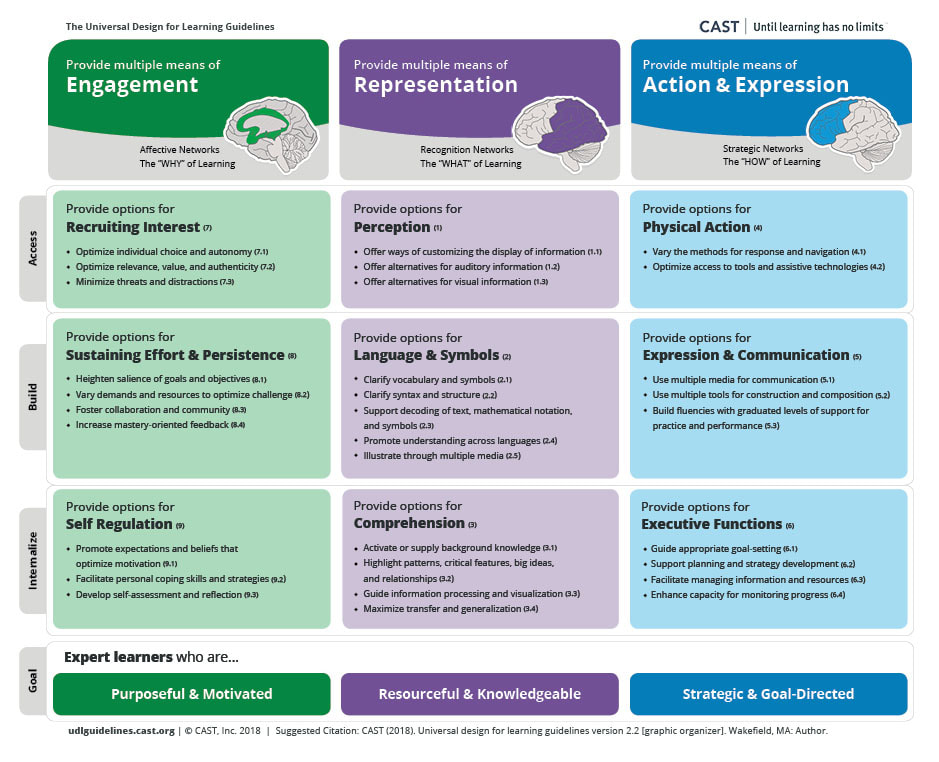
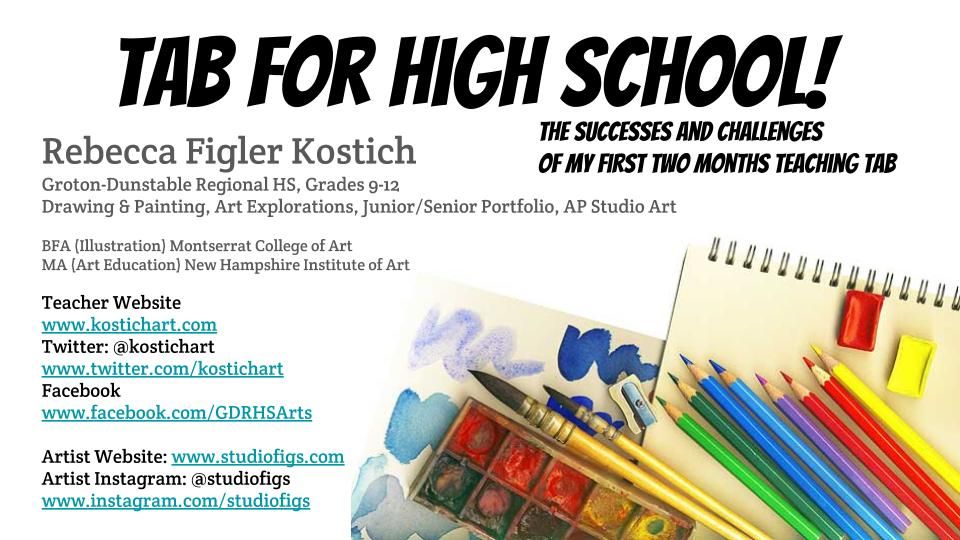
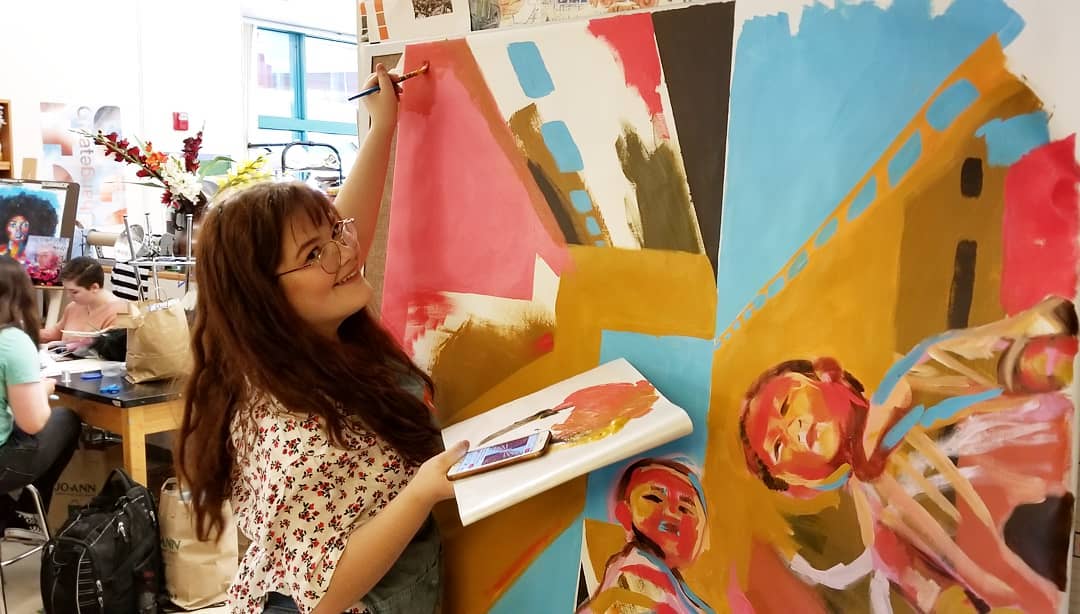
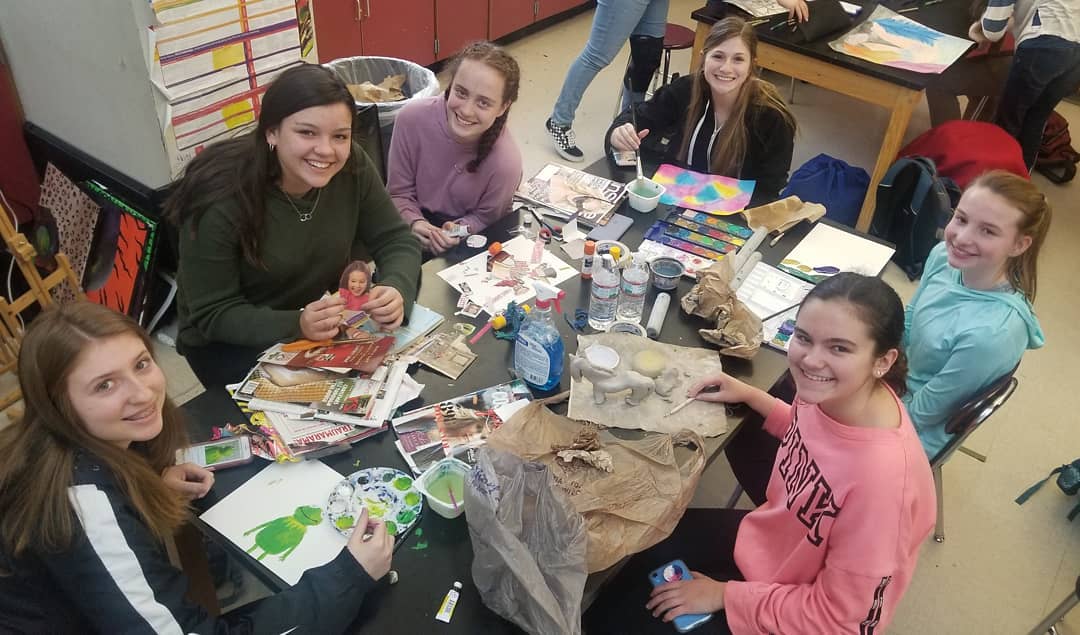

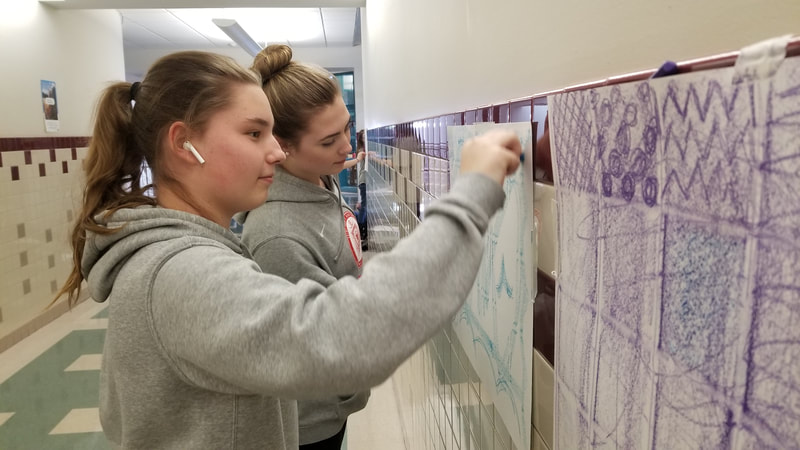
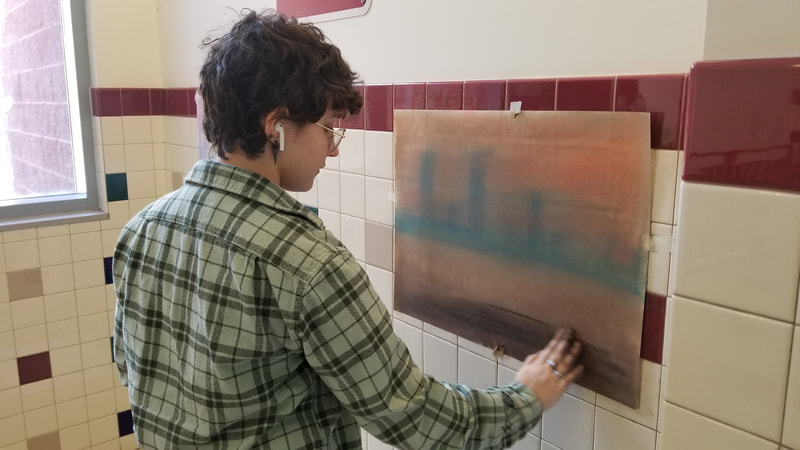
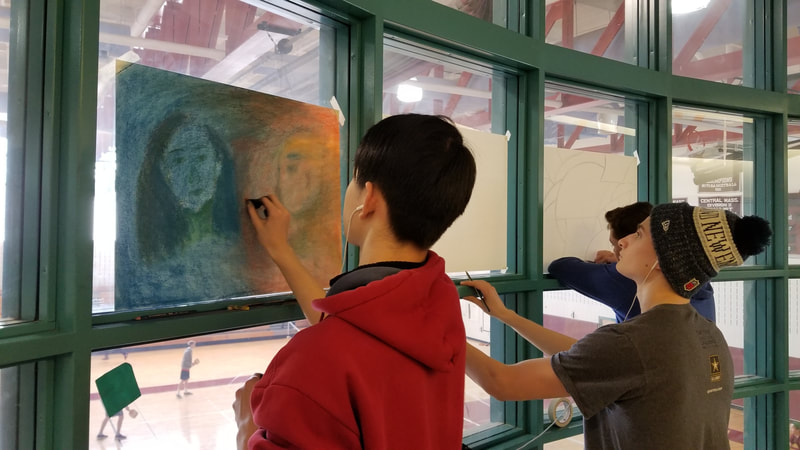
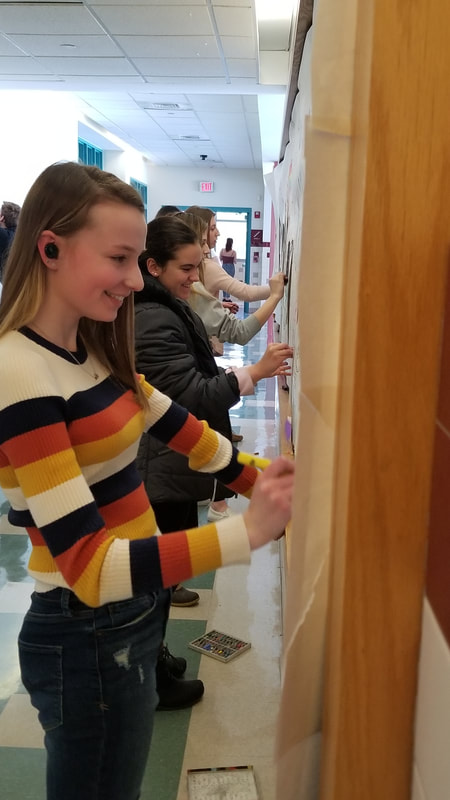
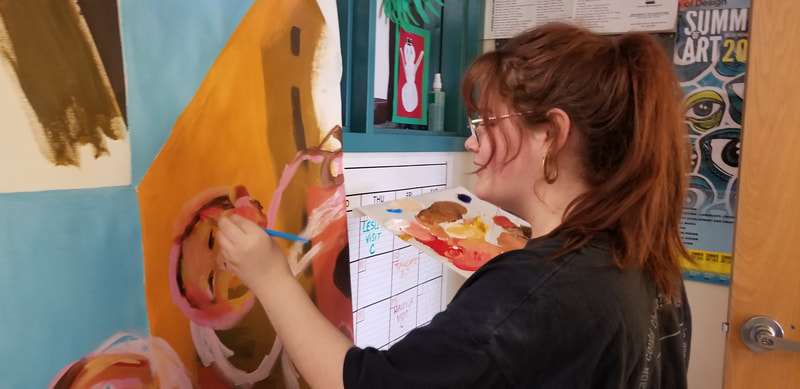
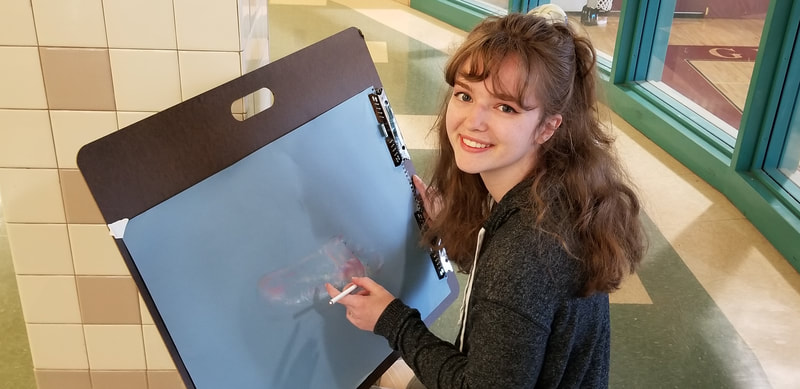
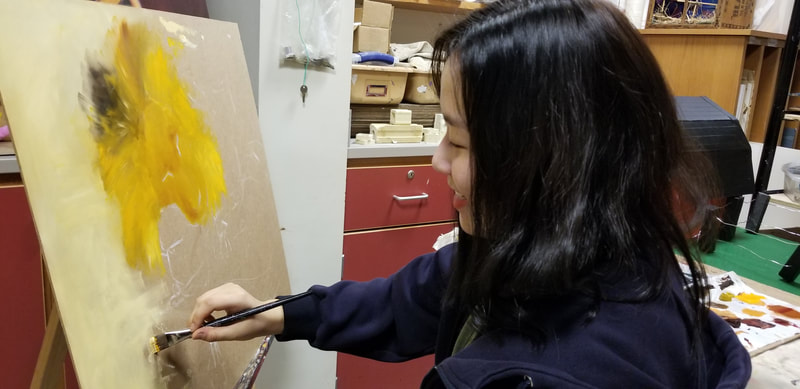
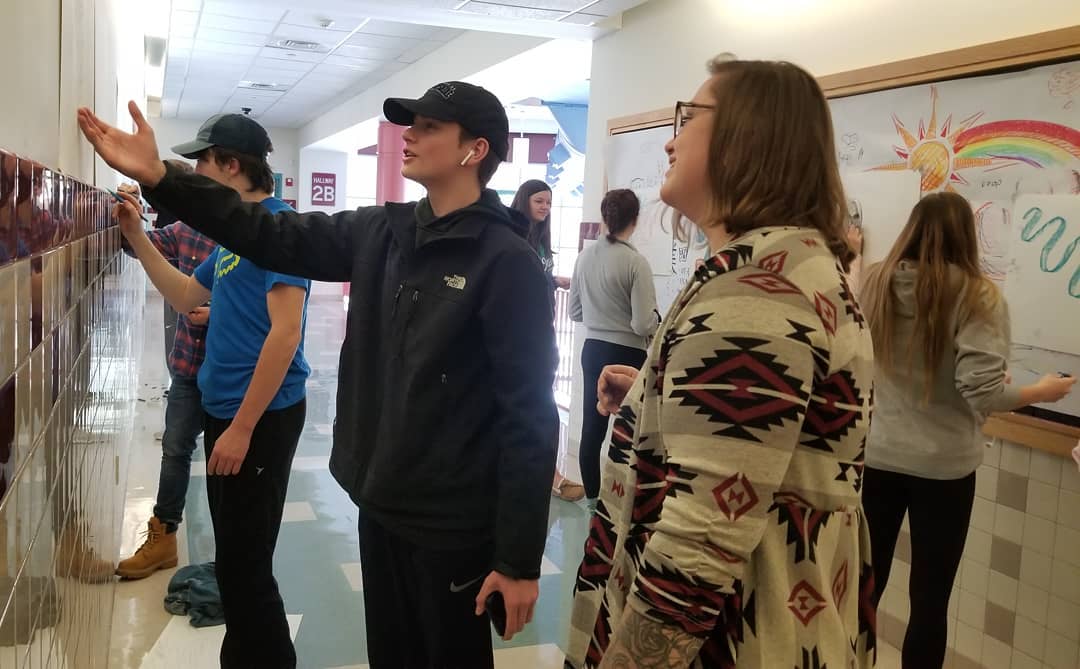
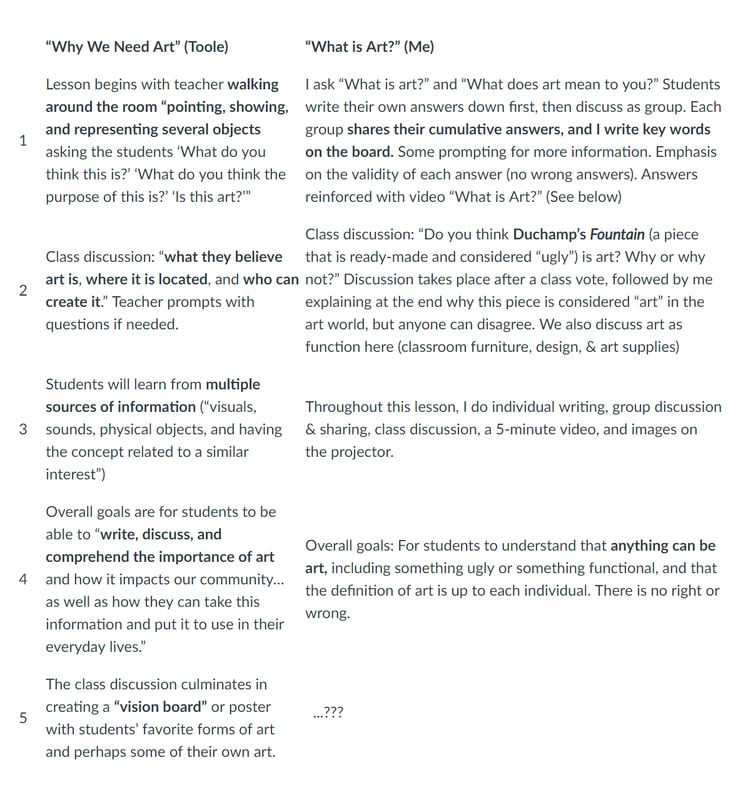

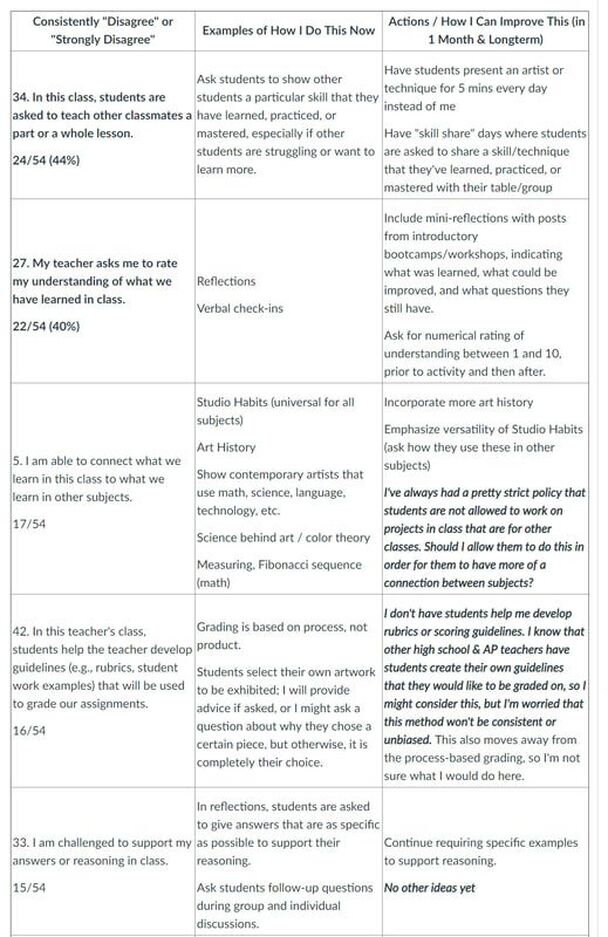
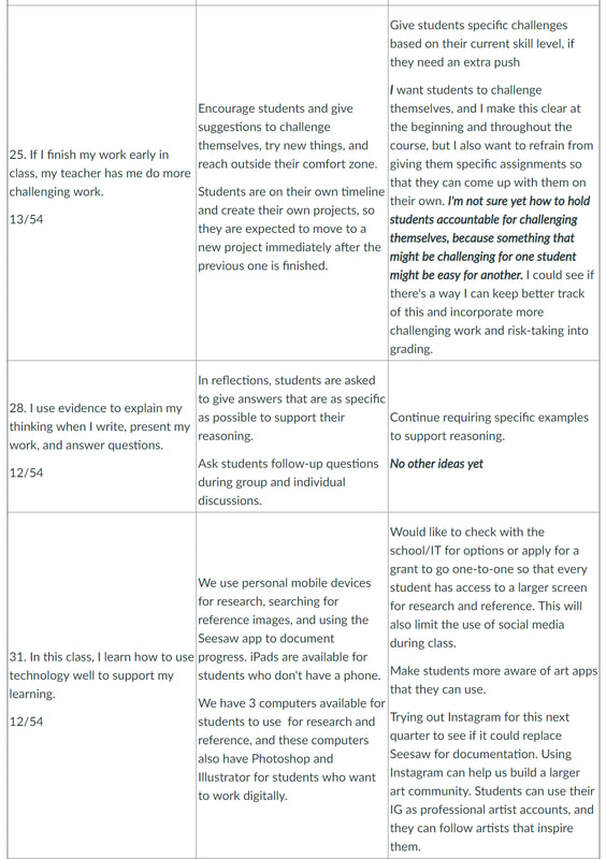
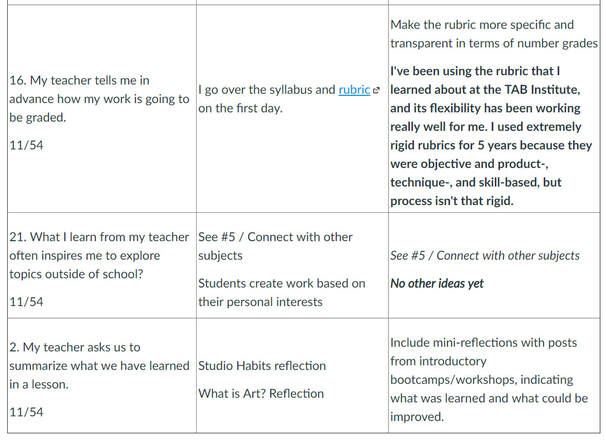
 RSS Feed
RSS Feed